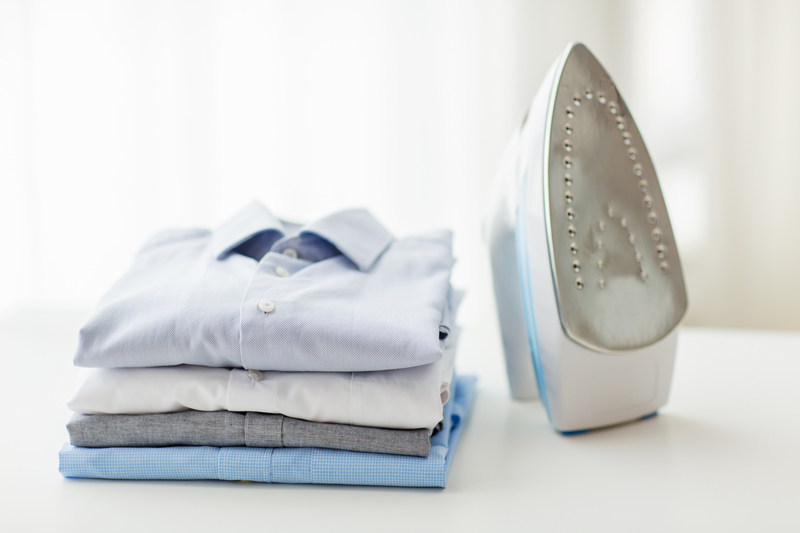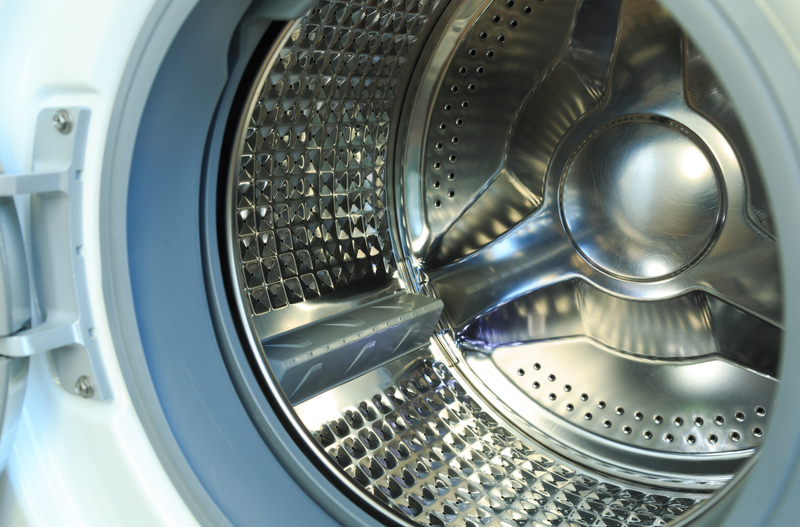Achieve a Pristine Stovetop: Removing Burnt-on Residue
Posted on 24/09/2025
Achieve a Pristine Stovetop: Removing Burnt-on Residue
Maintaining a clean, sparkling stovetop is not only visually pleasing but essential for kitchen hygiene and safe cooking. Unfortunately, even cautious chefs encounter stubborn, burnt-on residue at some point. This comprehensive guide explores the most effective methods for removing burnt food, grease, and grime from your cooktop--whether it's glass, ceramic, electric, or gas. With the right tools and a little elbow grease, you'll soon enjoy a pristine stovetop once again.
Understanding Burnt-on Residue: What Causes Stovetop Build-up?
Before delving into cleaning solutions, it's crucial to understand why and how burnt-on residue forms on your stovetop.
- Spills and Splatters: Overflowing pots or pan-fried foods can leave stubborn marks.
- High Heat: Cooking on high temperatures bakes on drips and splashes rapidly.
- Delayed Cleaning: Allowing spills to sit makes them harder to remove later.
- Grease Accumulation: Regular frying leads to sticky, blackened buildup.
These factors contribute to the scorched spots or blackened layers that mar your kitchen surfaces. Tackling these messes promptly is the key to achieving a spotless stovetop.

Essential Tools and Supplies for Stovetop Cleaning
Gather the following supplies to ensure your cleaning session is efficient and effective:
- Non-abrasive scrubbing pads or sponges
- Plastic scraper or old credit card (for glass top stoves)
- Soft microfiber cloths
- Baking soda and white vinegar
- Lemon juice
- Mild dish soap
- Commercial stove cleaners (optional)
- Rubber gloves for skin protection
General Guidelines: Safe Cleaning for Any Stovetop
Whether you own a modern induction range, a classic gas stovetop, or something in between, these general guidelines will help you avoid damage:
- Always wait until the surface has cooled completely before cleaning, to prevent burns.
- Never use steel wool or abrasive scouring pads that can scratch the surface.
- Work in gentle circular motions to lift residue without harming finishes.
- Test any cleaner on a small, inconspicuous area to check for compatibility.
Step-by-Step: Removing Burnt-on Residue from Specific Stovetop Types
Ceramic and Glass Cooktops
Glass and ceramic cooktops require special care. Their sleek surfaces are attractive but susceptible to scratches and stains. Follow this process for burnt-on residue removal:
- Remove loose debris gently with a soft, damp cloth.
- Create a paste using baking soda and a small amount of water.
- Spread the paste over the burnt areas; let it sit for 15-20 minutes.
- Spray white vinegar over the paste to create a fizzing action that lifts grime.
- Use a plastic scraper to gently scrape off loosened residue (keep it flat to avoid scratching).
- Wipe the surface clean with a damp microfiber cloth.
Gas Stovetops
Gas ranges come with removable burners, grates, and drip pans. Here's how to restore your gas stovetop's shine:
- Remove grates and burner caps; soak them in a sink filled with hot, soapy water.
- Apply a baking soda paste or degreaser to burnt-on spots on the stovetop surface.
- Let sit for 10-15 minutes; this helps loosen tough residue.
- Scrub gently with a non-abrasive pad; tough spots may require a toothbrush.
- Rinse grates and burner parts, dry them thoroughly before replacing.
- Use a pin to unclog stubborn burner holes if needed.
Electric Coil Stoves
Electric stoves with coils need a thoughtful approach:
- Turn off the stove and unplug it for safety.
- Remove the coils and drip pans.
- Wipe coils with a damp cloth; avoid submerging the electrical parts in water.
- Soak drip pans in hot, soapy water; sprinkle with baking soda for added lifting power.
- Scrub stubborn spots with a non-abrasive sponge.
- Rinse, dry, and replace all parts.
Eco-Friendly Remedies: Natural Solutions for Stubborn Stovetop Stains
Many homeowners prefer to avoid harsh chemicals in their kitchens. Fortunately, natural cleaning solutions can deliver gleaming results:
- Baking Soda & Vinegar: This classic combination breaks down caked-on residue through natural fizzing action.
- Lemon Juice: The citric acid in lemon helps dissolve grease and leaves a fresh scent.
- Salt Paste: Mixing coarse salt with a little water creates a gentle abrasive for scrubbing burnt patches.
- Hydrogen Peroxide: When mixed with baking soda, it forms a potent paste for severe stains (test on a small area first).
Advanced Methods for Stubborn Burnt-on Residue
If you're facing extremely stubborn stovetop grime, don't lose hope! These tactics may do the trick:
- Steam Cleaning: Place a damp towel over the stovetop and run a hot iron over it for a few minutes. The steam loosens burnt-on debris for easy removal.
- Razor Blade Scraper: On glass stovetops, carefully use a razor blade held at a flat angle to lift only the toughest layers--always check your manufacturer guidelines first.
- Enzyme Cleaners: Special enzyme formulas break down organic scorched food. Follow product instructions for best results.
Preventive Maintenance: Keeping Your Stovetop Spotless Longer
Achieving a pristine stovetop isn't just about cleaning up after accidents--prevention is the best solution. Here's how you can keep your cooking surface looking new:
- Wipe up spills immediately instead of waiting for them to dry or bake on.
- Use splatter guards when frying or sauteing.
- Regularly clean grates, burners, and drip pans to avoid build-up.
- Apply a stove protectant or polish to maintain shine and make future clean-ups easier.
- Cover pots with lids to reduce boil-overs.

FAQs: Burnt-on Stovetop Residue
Can I use oven cleaner on my stovetop?
While some oven cleaners are labeled as safe for stovetops, most contain harsh chemicals that may damage certain finishes, especially on glass or ceramic cooktops. Always check your stove's manual and test on a small area first.
What should I avoid using on my glass stovetop?
Stay away from steel wool, abrasive scouring pads, bleach, and ammonia-based cleaners, as these can etch or scratch delicate surfaces and leave unsightly marks.
How often should I deep clean my stovetop?
A weekly cleaning routine is ideal, with spot cleaning after every use. For heavy-duty cleaning (removing burnt-on residue), once a month should suffice, unless you cook frequently with high heat or oil.
Conclusion: Enjoy a Gleaming, Pristine Stovetop Every Day
Achieving a spotless stovetop is well within reach. By combining prompt spill management, the right cleaning methods, and regular preventive maintenance, you'll not only remove burnt-on residue effectively but also keep your kitchen looking and functioning at its best. Remember: the sooner you address splatters and spills, the easier it is to ward off stubborn stains. Embrace these proven strategies, and you'll enjoy a pristine stovetop--ready for countless delicious meals.
Keep this guide handy for cleaning emergencies and pass it along to fellow home cooks striving for spotless results!



